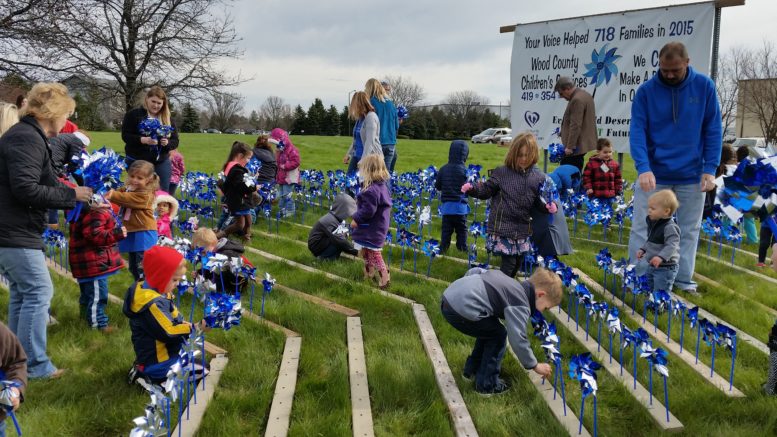By JAN LARSON McLAUGHLIN
BG Independent News
Not long ago, an 8-year-old girl was taken into custody by Wood County Children’s Services knowing how to shoot up heroin. The girl hadn’t done it herself, but she had watched her mom do it in the car, using the seatbelt to tie off her arm.
The young girl was one of many taken in by Children’s Services last year due to the opioid epidemic.
“There are kids who have witnessed overdoses. We’ve had some who have witnessed their parents die,” said Brandy Laux, assessment supervisor at Wood County Children’s Services.
The number of child abuse and neglect investigations conducted in Wood County by Children’s Services jumped from 718 in 2015 to 894 in 2016.
Many of those cases were due to parents abusing opioids, said Sandi Carsey, protective services administrator for the county.
At least a third of the cases have been related to heroin and opiate abuse – though it’s probably higher than that, according to both Carsey and Laux. Wood County’s numbers are actually lower than some counties in southern Ohio, where pill mills were located. Opioids are involved in an estimated 80 percent of the cases in some of those counties.
The addicts come in all socio-economic groups.
“It’s not just the lower income families,” Carsey said. “It’s soccer moms, too.”
And because heroin and opiates are so hard to kick, the children are likely to be removed from their homes.
“In the last year, year and a half, we’ve had a lot more kids go to relatives,” Carsey said. Normally, Children’s Services works with the parents to make the home safe for the children and keep families together. However, that often isn’t possible in cases where opioids are involved.
“They have so much bigger issues,” and in most cases the opioid-addicted parents aren’t going to make the changes needed to get their children returned.
“We consider heroin cases more severe,” Laux said. “It’s easier for people to overdose and harder for people to kick.”
In most of the cases involving opioids, it’s not that the parents overtly abuse their children – they neglect them, which can also have dangerous outcomes especially for very young children.
“When using opiates, they can’t parent,” Carsey said. “They’re not capable of making safe decisions for their children. The younger the children are, the more vulnerable they are.”
“They can’t fend for themselves,” Laux said of the younger children. When their parents are high, they can’t make dinner. They can’t change a dirty diaper. The parents may pawn or sell family items to get money for drugs.
Often times, both parents in a family are addicted. In one case, Children’s Services had placed the child with a grandmother, who later was found to be using opioids as well.
The agency has also taken custody of newborn babies who have tested positive for heroin because their mothers were using.
Some counties have found children who watch their parents get high, then start using opioids themselves.
“They know so much about drugs,” Laux said of children in homes where a parent is addicted to heroin or opiates. “They know the difference when their parents are using” and when they are sober, Laux said.
“Obviously, the parents relapse frequently,” Laux said, so Children’s Service has to find other homes for placement of the children.
“Lucky for us, we’ve had a lot of family members step up,” Carsey said.
To meet the challenges of such an increase in abuse and neglect cases, Wood County Children’s Services has added another investigator, and plans to soon add another person to help with the load.
To remind residents of Wood County about the number of child abuse and neglect cases, the agency will again in April be putting up a field of pinwheels – with one for each child involved. Different this year, the agency will also be putting up separate pinwheels in the communities where the children lived, to make people aware that child abuse and neglect can happen anywhere.




